Nova Scotia is one of my favourite parts of Canada. Four out of the past five summers, I have spent at least one week in Nova Scotia, collecting minerals, buying minerals, visiting friends or family and being a tourist! Here are a few images of my most recent visit.
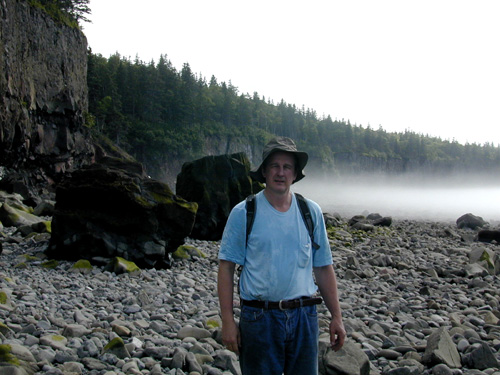
If you are interested in collecting zeolite-type minerals, the Bay of Fundy is a great place to visit! The waters of the bay are constantly pounding away at the bluffs of amygdaloidal basalt that rim much of the east end of the Bay. The water, in combination with frost action, breaks down the bluffs, constantly providing fresh exposures of basalt containing crystals of zeolites, silcate minerals, etc. Hall's Harbour and Harbourville are places where it is easy to access the basalt clifs at low tide. Don't get caught by the tides, though!! They come in fast and are up to almost 50 feet in height!! The highest tides in the world!
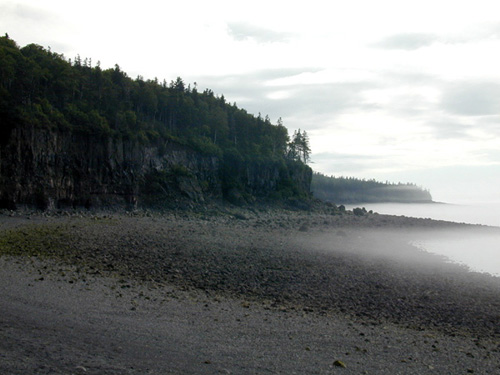
If you walk along the base of the bluffs, 50-100 feet high, at low tide, as pictured here. It is easy to find good specimens of minerals, especially zeolites. This picture was taken as the tide was going out. A few hours later the tide came back in and the water as pounding away at the base of the bluffs! A beautiful place but dangerous.
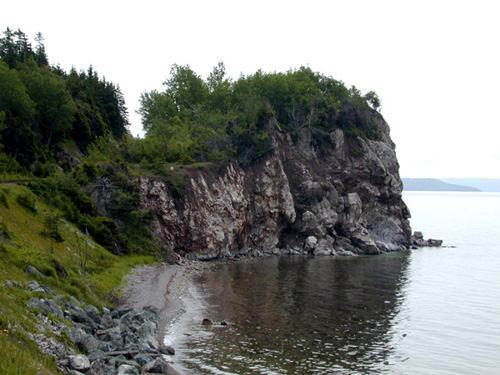
This is the collecting locality at Iona. You may notice that there has been a major cave in of the gypsum/anhydrite bluff, due to undercutting by wave action. There is nothing to collect on this side of the bluff but you can still access howlite bearing anhydrite on the other side with a steep climb down.
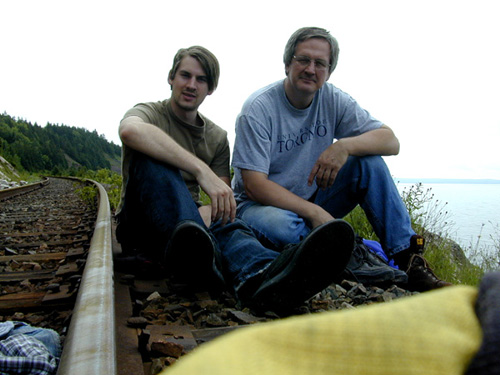
My son Daniel and me by the railway tracks at Iona. If the bluff collapses one more time here, the railway may be in trouble, as you can see!
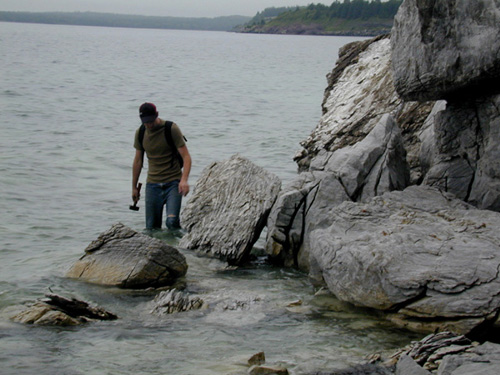
The howlite crystals can be collected by chiselling them off of boulders that are in the water. You have to wade around in the water to do it, though. That is why, you must wait for a calm day. If the wind is blowing from a southerly direction, you cannot stand up and risk hurting yourself badly on the rocks. It can go from relative calm to large waves in a matter of a
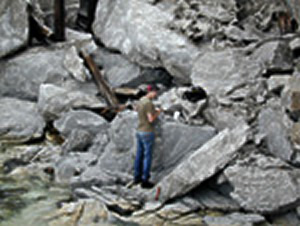
Here is another view showing Daniel chiseling on boulders of anhydrite to liberate those rare clusters of howlite crystals. The rocks are very jagged and sharp.
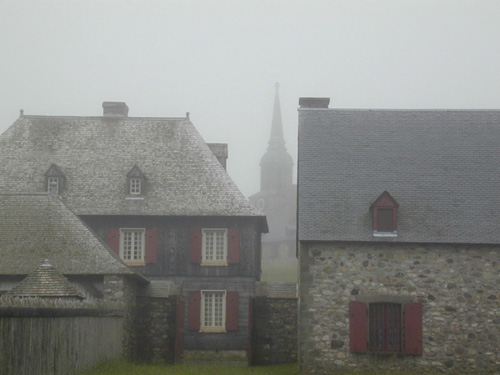
We travelled to Cape Breton to collect howlite crystals at Iona, but the waves were too high and dangerous, the day we arrived. Instead we travelled to the ancient town of Louisburg which has been reconstructed, precisely according to old plans. This was one of the main military strongholds of the French empire up until the late 1700's when it was destroyed by the British. Accurate plans of the town and battlements were preserved in Paris and Quebec City and so reconstruction was a just a matter of time and money! They have done a wonderful job rebuilding this national monument and have staffed Louisburg with knowledgeable people dressed in period clothing and uniforms. I would highly recommend a visit there.
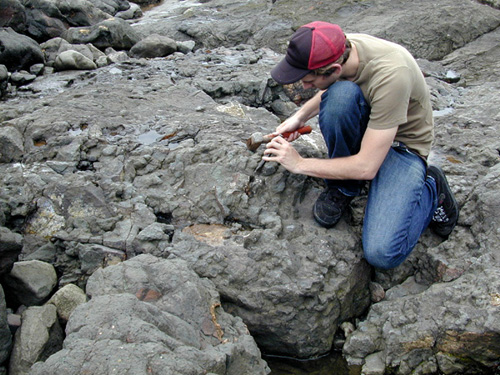
We didn't find many good minerals to break out of the rock here but Daniel did manage to find a nice heulandite specimen in this weird ropy basalt.

Another geode held solidly by the basalt!!
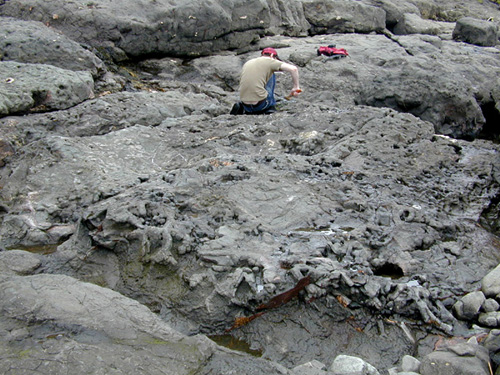
Here is a different view of the weird basalt. An unusual texture! Very rope-like.
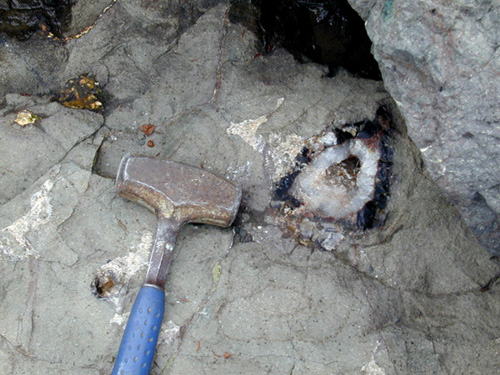
The basalt at Scotts Bay is very hard and siliceous. You can find very nice looking agate geodes, some lined with quartz or amethyst crystals, veins and amygdules of zeolites in the low lying cliffs and ledges here. The rock is VERY hard, though and it is difficult to break them out. Here is a nice agate geode.

The basalts bluffs at Harbourville are criss-crossed with veins of various silicate minerals, most often stilbite, heulandite, analcime and laumontite. Here, my son Daniel stands in a cave that was formed by wave action (and probably mineral collector hammer pounding) away at a larger vein of stilbite. Note the vein on the bottom and top?
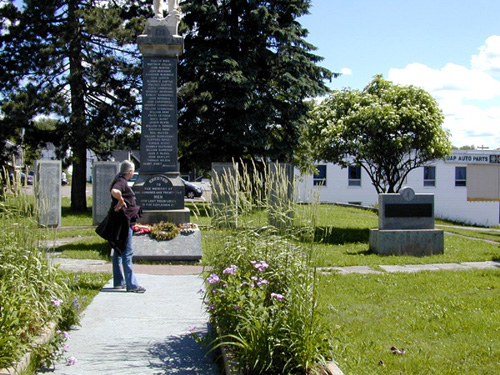
Another view of the Miners' Memorial. We were moved and impressed by this place.

There is no coal mining in Springhill any more but there is an old mine that has been partially refurbished for educational purposes. This mine offers the opportunity for the public to go underground and see what a real coal mine is/was like. There is no machinery working but the installation is authentic and there is still an anthracite coal seam that a guide takes you, to pointing out features of the mine along the way. You can even swing a pick and shovel for your own souvenir! Here is a picture of Carol and me doing just that.
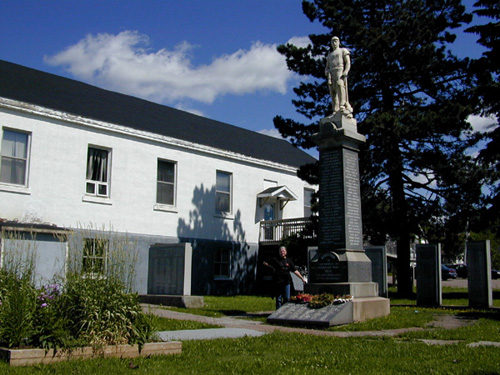
Springhill, Nova Scotia has a long history of coal mining, dating back hundreds of years. The Springhill Miners' Memorial is a sobering place. Springhill has had several terrible mining disasters over the years. The most recent were in 1956 when 39 coal miners were killed in an explosion and then in 1958 when 74 miners were killed in a "bump" a geotechnical failure of the mine workings. There have been many others over the years and these monuments at the Springhill Miners' Memorial record the names and circumstances of all. The building to the left of the Memorial is the Miners' Union hall. Tough stuff.....